Public transport and aviation
Public transport and aviation
Satisfaction with public transport
Sixty eight per cent of people were very or fairly satisfied with public transport in 2019, an increase from 2018. Satisfaction had fallen in the previous four years, from seventy five per cent in 2014. [Table 4 and Figure 24]
Figure 24: Percentage of adults ‘very satisfied’ or ‘fairly satisfied’ with public transport, 2007-2019
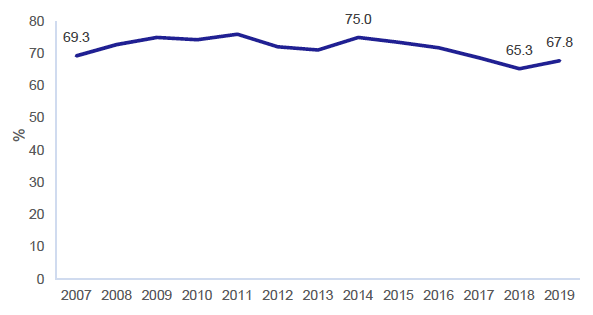
Local bus services
Bus
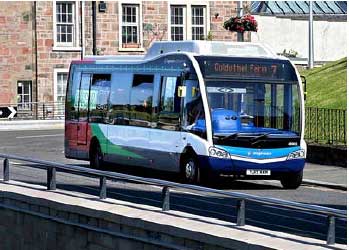
In 2019, 39 per cent of survey respondents had used the bus in the past month. Eight per cent used the bus ever day or almost every day. These are the lowest figure since comparable records began in 2002. [Table SUM1, Table 2 and Figure 25]
Figure 25: Percentage of adults who had used the bus in the past month, 2002-2019
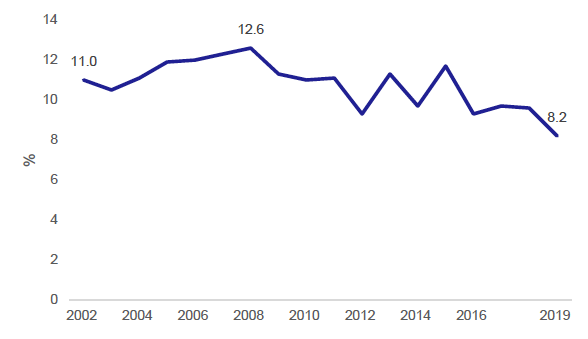
Other sources suggest more clearly that bus use has been declining. Provisional estimates from DfT’s survey of bus operators indicate that there were 366 million bus journeys made in Scotland in 2019, a decrease compared with 380 million in 2018 and 471 million in 2002. [Table Sum 2]
Women tended to use buses more frequently than men (26% of women used the bus at least once a week compared to 23% of men). [Table 28]
Frequency of bus use differed across age groups and was highest amongst younger people (61% of 16-19 year olds had used the bus in the last month). It was lowest for people aged 50 to 59 (29%), but higher at older ages, with fifty-nine per cent of those aged 80 to 89 having taken the bus. [Table 28 and Figure 26]
Figure 26: Percentage of adults using the bus at least once a month, by age, 2019

Frequency of bus use was also higher in urban areas (54% of people in large urban areas used the bus at least once a month compared to 19% in small remote towns and 20% in remote rural areas). [Table 28 and Figure 27]
Figure 27: Percentage of adults using the bus at least once a month, by urban rural category, 2019
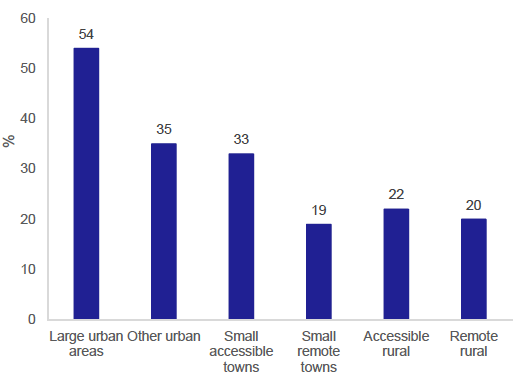
Further bus statistics can be found in the Bus and Coach Chapter of Scottish Transport Statistics.
Bus Access
The Scottish Accessibility to Bus Indicator has not been updated since the last publication. See Transport and Travel in Scotland 2018 for the most recent version.
Rail travel
Thirty per cent of the population used the train in the last month. There was an upward trend from 2002 to 2014, when the figure rose from fifteen percent to thirty per cent since which it has remained fairly constant. [Table 28, Table SUM1, and Figure 28]
Train
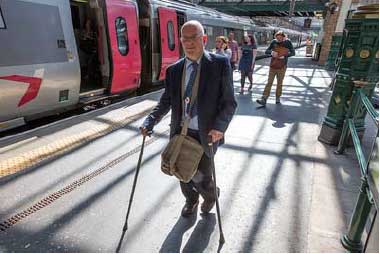
Passenger figures from ScotRail also show a similar trend. There were 96.4 million passengers carried by ScotRail in 2019, compared with 97.8 million in 2018 and 57.4 million in 2002. [Table SUM2]
Figure 28: Percentage of adults using the train at least once in the past month, 2002-2019
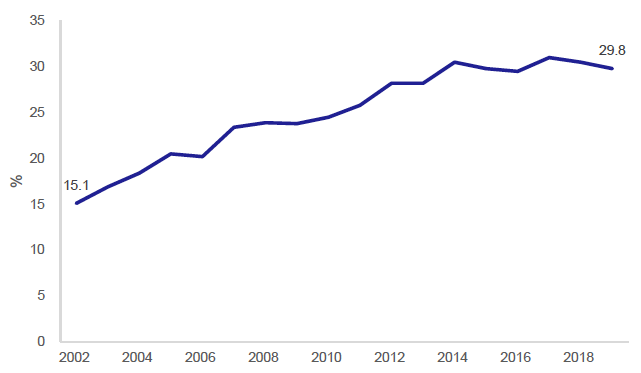
The proportion of people who reported that they had used the train in the last month generally tended to decrease with age (41% of those aged 20-29 had used the train in the last month, compared to 8% of those aged 80+). [Table 28 and Figure 29]
Figure 29: Percentage of adults using the train at least once in the past month by age, 2019
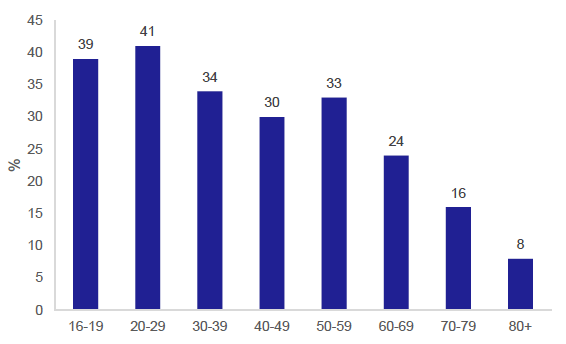
Train use was higher in higher income households. Forty three per cent of those interviewed with a household income of over £50,000 had used the train in the last month, compared to between 21 and 23 per cent for the categories up to £20,000). [Table 28 and Figure 30]
Figure 30: Percentage of adults using the train at least once in the past month by income, 2019
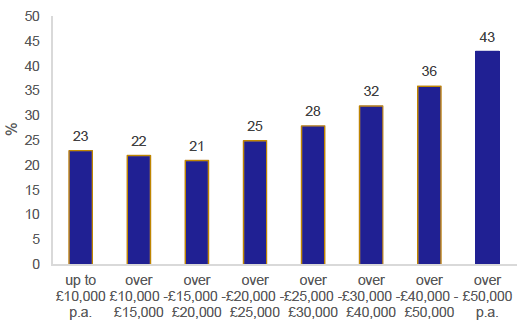
Of those who had used the train in the last month, the most frequent journey purpose was shopping (31%), followed by visiting friends or relatives (28%) and other recreational activities (27%). [Table 44]
Detailed rail statistics can be found in the Rail Chapter of Scottish Transport Statistics.
Aviation
Fifty three percent of adults took at least one flight for leisure in 2019. This is an increase from 2018 (51%) and from a low point of 43% in 2011. [Table 37 and Figure 31]
Figure 31: Percentage of adults taking flights for leisure, 2009-2019*
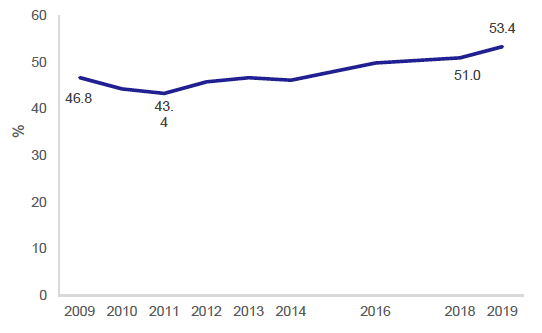
*The question was not asked in 2015 and 2017
Eight per cent of adults took at least one flight for business. The percentage has changed little since 2009. [Table 38].
Figures from the Civil Aviation Authority show an increase in the number of air terminal passengers (passengers joining or leaving aircraft at Scottish airports) between 2009 and 2018 (from 22.5 million to 29.4 million). [Table SUM2]
For those who had flown, flights to Europe were most common for leisure travellers (79% flew at least once to Europe). For business flyers, flights to the rest of the UK were most common (69% flew at least once to the rest of the UK). [Tables 37b, 38b, and Figure 32]
Figure 32: Percentage of those who flew who took at least one flight to a destination area, leisure and business users, 2019
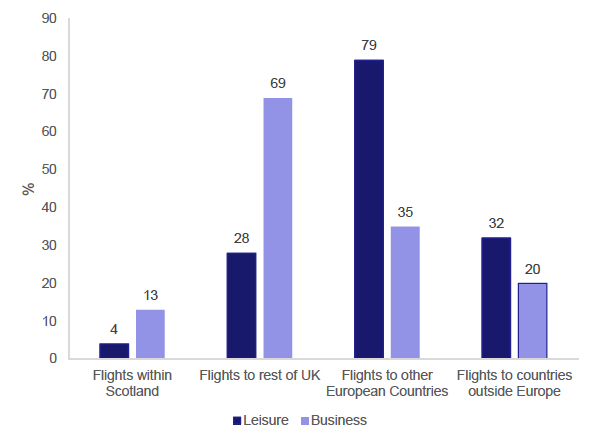
By far the two most common reasons for flying was that it was quicker (79%) and cheaper (32%). [Table 39]
Detailed aviation statistics can be found in the Aviation Chapter of Scottish Transport Statistics.